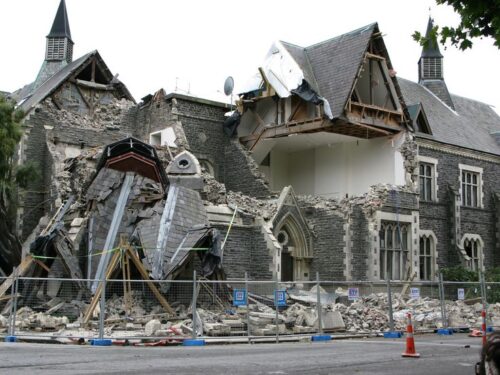Following the Christchurch disaster of 2011, the Real Estate Institute of New Zealand has advised pre-purchase building inspections be regular practice in earthquake affected areas.
To check a home’s earthquake fitness, a building inspector will start in the crawl space underneath the home and check that the property is properly bolted down to its foundations. Without the bolts, a home may slide off its foundation during an earthquake.
A building inspector will also check for faulty materials in the concrete and the wood framing. The foundation is a common area of structural weakness, so your building inspector will be looking for evidence of dry rot or damp. This material will need to be replaced if damaged as it represents a major structural defect and ultimately means the home just isn’t up to withstanding an earthquake.
The stud walls will also be examined to ensure they are braced with plywood to resist motion. Without plywood, stud walls are simply not strong enough to hold an earthquake.
A building inspection is a professional, objective, non-obtrusive examination of the condition of a residential or commercial property either before purchase or before sale. Having a building inspection done is one of the most important parts of the purchase process because it gives prospective purchasers all the information they need about the biggest investment they will ever make, it points out major defects and safety hazards and it gives buyers the opportunity to find out the history of the home and what it has been involved in.
Jim’s Building Inspections can give you the peace of mind that your home is earthquake-proof and safe for your family.
To arrange a building inspection, click here for your obligation-free quote, or call 0800 454 654 to speak to a team member today.
Conclusion
Ensuring your home is earthquake-ready is crucial for the safety of your family. A professional building inspection can identify structural vulnerabilities and weaknesses, such as unsecured foundations or weak materials, that could jeopardize the stability of your home during an earthquake. By addressing these issues, you can safeguard your home, ensuring that it meets the necessary standards to withstand a seismic event. Don’t wait until it’s too late—arrange an inspection to give you peace of mind.
FAQs
A building inspector can assess key areas like the foundation, structural integrity, and materials used to determine earthquake readiness.
Common issues include unsecured foundations, rotting wood, and poorly braced stud walls.
A properly bolted foundation prevents the home from sliding off during an earthquake, a key factor in earthquake preparedness.
Yes, you can reinforce your home’s foundation, walls, and framing to better withstand seismic activity.
Dry rot weakens wood framing, making it more susceptible to collapse during an earthquake. It should be repaired or replaced.
It’s recommended to have a building inspection every few years, especially if you live in an earthquake-prone area.
Costs vary, but investing in an inspection can save significant repair costs in the future.
While not mandatory, having an earthquake inspection can increase the marketability and value of your property.



